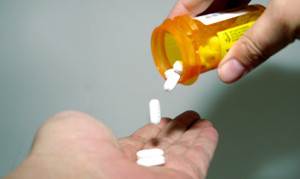
Preventing just one person at high risk from contracting HIV could save from $229,800 to $338,400, depending on the continuity of treatment.
Researchers projected the savings by estimating the lifetime medical costs of people both with and without HIV, assuming that the HIV-infection occurred at age 35.
The findings will be used by fiscal planners and public health advocates as they evaluate current prevention programs and make decisions about resource allocation. One relatively new—and expensive—HIV prevention option is pre-exposure prophylaxis (PrEP), which is targeted at high-risk individuals and uses a medication that is also part of some HIV treatment regimens.
NEW APPROACHES
“This study shows the continued value of HIV prevention, even in an era when people effectively treated with HIV medications can have a close-to-normal life expectancy,” says lead author Bruce Schackman, professor of psychiatry and public health at Weill Cornell Medical College. “There is still significant value in avoiding infection, from both cost and quality of life points of view.”
“Recently, there has been an increased focus on new HIV prevention approaches,” says Schackman. “That focus on prevention approaches, including the use of PrEP, led to our interest in determining the value of preventing an HIV infection.”
In a 2006 study, Schackman and colleagues found that the lifetime medical cost of care for people with HIV, beginning at the time of infection, was $361,400 in today’s dollars.
While that finding was seen as a benchmark for evaluating HIV treatment and prevention, updated estimates reveal that the costs differ depending on when people with HIV enter treatment and how consistently they stay in treatment.
After subtracting medical costs that the authors projected would have occurred anyway without HIV infection, the potential savings are lower than the previous estimate. This is because people with HIV are now living longer and have many of the same medical care costs as people without HIV.
LIVING LONGER WITH HIV
To reach the new figures, reported online in the journal Medical Care, researchers used the Cost-Effectiveness of Preventing AIDS Complications model and data from the HIV Research Network to project life expectancy and costs among HIV-infected persons in the United States.
The new study consists of two types of analyses: a base case and sensitivity analyses, all tracking individuals from the age of 35 until death.
The base case represents current care patterns, where patients often don’t enter care as soon as they become infected and don’t always follow their treatment regimens consistently or are lost from care. The sensitivity analyses, on the other hand, include a best-case scenario in which the infected individual receives antiretroviral therapy immediately and is never lost from care.
The base case resulted in a lifetime medical cost with HIV of $326,500. The best-case scenario found a lifetime medical cost with HIV of $435,200. The average lifetime medical cost for similar people without HIV was estimated at $96,700.
“Effective treatments have increased life expectancy after HIV infection to levels near those of noninfected individuals,” says Kelly Gebo, co-senior author and professor of medicine and public health and vice provost for education at Johns Hopkins University. “In fact, deaths from non-AIDS-related causes now exceed deaths from AIDS for those with HIV in the United States.”
“As treatments become more effective, people with HIV will stay on them and live longer, thereby incurring greater medical costs,” says co-senior author, Elena Losina, professor of orthopedic surgery at Harvard Medical School and associate professor of biostatistics at Boston University School of Public Health. “The more effective the treatment is, the greater the medical cost saving is for preventing the disease in the first place.”
Researchers from Brigham and Women’s and Massachusetts General Hospital and the US Agency for Healthcare Research and Quality contributed to the research.
Source: Cornell University and Futurity.org




